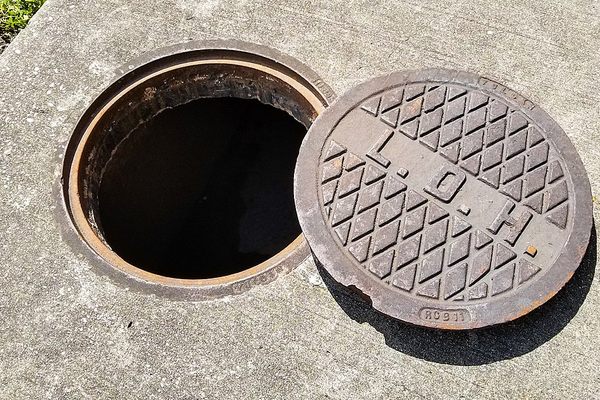7 Big Things That Are Smaller Than This Fatberg
A water company in Devon, England, found the enormous blob clogging the sewer.

Wielding lights and clad in reflective vests and waders, the team sloshed through the murky liquid, which squelched against their boots each time they took a step. On both sides of them, debris had piled up, almost like sand banks or soot-blackened snow. But they were far from shore and sidewalks, deep underground in a sewer running beneath the town of Sidmouth, in Devon, England. The heaps weren’t sand or snow, but saponified solids, fat, and trash. The crew was trekking alongside a fatberg.
The water utility South West Water told the BBC that the colossal, congealed mass was the largest they had encountered. In a statement, the water company said that the fatberg was found during routine checks, and estimated it would take two months or so to haul it out and hose down the sewer. Though it’s too soon to account for all the fatberg’s heft, the utility reports that this one seems to be around 210 feet long.
That’s big, but hard to picture as something that sprawls horizontally underground. It’s a bit easier to imagine relative to the height of these other things, which all pale in comparison to the fatberg:
- The above-water-surface height of the iceberg that sunk the Titanic (between 50 and 100 feet)
- “Li Jiawan Grand Ginkgo King,” said to be the tallest gingko tree in the world (98 feet)
- “Christ the Redeemer” statue in Rio de Janeiro (98 feet, not including the pedestal)
- Coney Island’s Wonder Wheel (150 feet)
- The Statue of Liberty (151 feet, measured from the top of the base to the torch)
- The Roman Colosseum (159 feet)
- Nelson’s Column in Trafalgar Square (169 feet)
Just a few weeks ago, in a roundup of Atlas staffers’ predictions for the 365 days ahead, I forecast that 2019 would be the Year of the Fatberg. The chunky, gunky sewer-cloggers are murky mirrors into the behaviors of people above the ground, because they hold all the stuff we flush and try to forget about—including cooking grease, napkins, floss, and menstrual products, which don’t belong in the pipes in the first place. I’m not a betting woman, but I’ll say this: It’s already looking promising.








Follow us on Twitter to get the latest on the world's hidden wonders.
Like us on Facebook to get the latest on the world's hidden wonders.
Follow us on Twitter Like us on Facebook